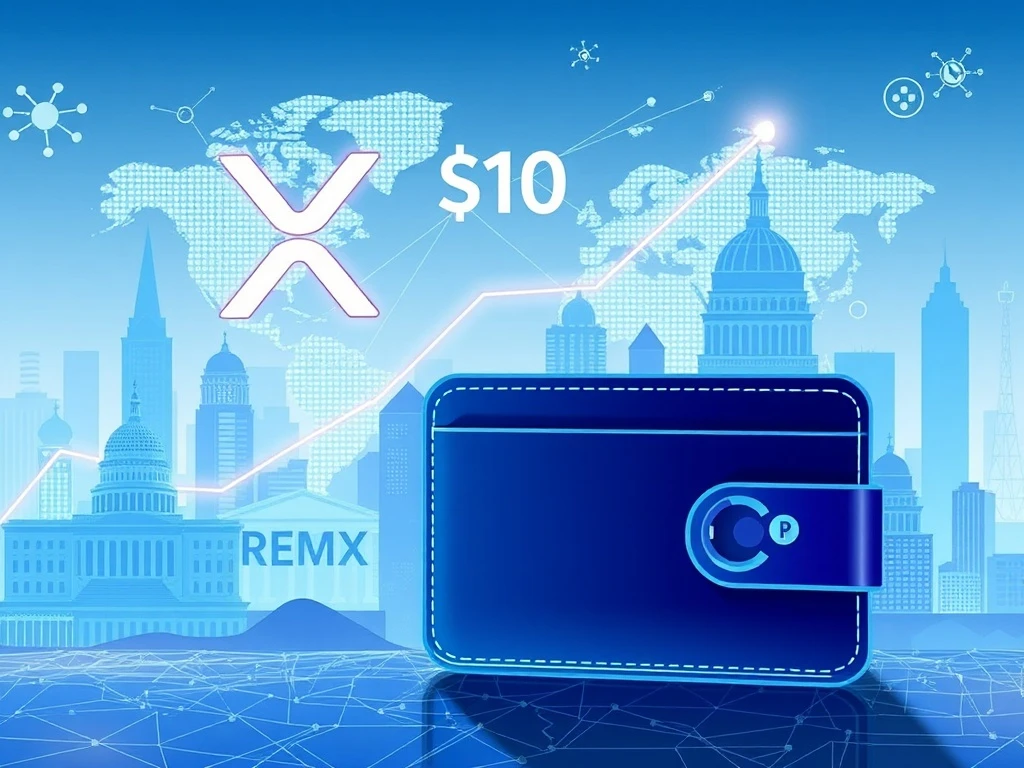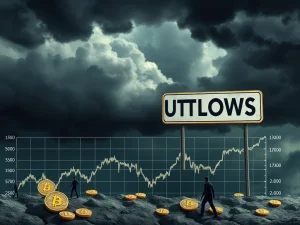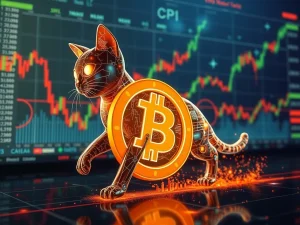XRP Price Prediction: Unlocking Potential $20-$30 Surge Amidst Crucial Correction Warnings

The world of cryptocurrency is a rollercoaster, and for XRP holders, the ride is getting particularly exciting. Recent XRP price prediction analyses suggest a monumental surge to $20-$30, sparking immense optimism. But before you get too carried away, a significant warning looms: a potential 50% correction. How should investors navigate this high-stakes environment?
The XRP Price Prediction Debate: Bullish Targets vs. Correction Risks
Prominent XRP analyst Zach Rector has reiterated a bullish forecast for XRP, projecting a price surge to $20–$30 in the current market cycle. However, he emphasizes a critical caveat: a potential 50% correction could follow such a rally. Rector’s analysis is rooted in observed investor behavior, specifically the tendency to take profits at market peaks, which he believes will likely trigger a sharp pullback once XRP reaches these ambitious levels.
This perspective contrasts with other analysts who challenge the inevitability of a major correction. Johnny Utah, another XRP proponent, argues that structural changes in the market could bypass traditional correction patterns. Factors like increasing regulatory clarity, expanding real-world adoption, and growing institutional interest—particularly through Exchange-Traded Funds (ETFs)—could create a new market dynamic. This aligns with Bitcoin advocate Michael Saylor’s view that significant price adjustments might only occur at much higher valuations.
While Rector acknowledges these evolving market conditions, he maintains that global liquidity trends, rather than specific regulatory or macroeconomic shifts, will ultimately dictate XRP’s trajectory. This ongoing debate highlights the complex interplay of technical analysis, market psychology, and fundamental developments in shaping the asset’s future.
What’s Driving the XRP Forecast? Beyond Traditional Cycles
The optimism surrounding XRP is not limited to Rector’s long-term vision. A spectrum of analysts has offered various bullish targets, painting a vibrant picture for the asset’s near and mid-term future:
- Tony Severino projected a rapid ascent to $13 within weeks, citing technical breakouts and historical bull market momentum.
- CasiTrades set a near-term target of $6.50–$8 for July, raising her end-of-year XRP forecast to $26 if current momentum persists.
- EGRAG’s analysis placed XRP’s likely cycle top between $7 and $21, with a remarkable $33 peak possible if the 2017 price trajectory is replicated.
- Ripple’s Van Wickle and Armando Pantoja offered bullish targets of $14 and $25, respectively, dismissing concerns about XRP’s market capitalization constraints.
- HOKANEWS.COM noted a $15 target for XRP, with extensions to $30 under favorable conditions.
- MSN’s analysis highlighted resistance at $28 and $30, suggesting $40 could be a potential ceiling if bullish momentum holds.
These diverse projections underscore a collective belief in XRP’s upside potential, even as analysts grapple with how traditional four-year crypto cycles might evolve in a maturing market. The psychological drivers of liquidity, however, remain a constant factor.
Navigating Crypto Volatility: What Investors Need to Know
Despite the widespread optimism, market dynamics remain uncertain, and the inherent crypto volatility of digital assets cannot be overlooked. Rector himself highlighted that declining open interest and shifts in institutional demand could catalyze corrections. These technical indicators, when combined with broader macroeconomic realities, paint a complex picture.
Regulatory uncertainty further complicates the outlook. The SEC’s delayed approval of crypto ETFs, including Bitwise’s application, has already led to XRP dropping 6% in late July due to lingering ambiguity. Analysts caution that broader financial instability—potentially linked to crypto’s evolving landscape—could amplify this volatility. On a more positive note, Ethereum’s recent outperformance over Bitcoin in metrics like institutional demand has sparked renewed interest in altcoins, potentially creating a tailwind for XRP as capital flows diversify.
The Surge of Institutional Interest in XRP
A significant factor in many bullish XRP forecast models is the growing wave of institutional interest. The potential approval of XRP ETFs, similar to those seen for Bitcoin and Ethereum, could unlock substantial capital inflows from traditional finance. This influx would not only provide liquidity but also lend considerable legitimacy to XRP as an asset class. Institutional adoption could fundamentally alter the market’s structure, potentially mitigating the severity of corrections that have historically plagued retail-driven crypto markets. Michael Saylor’s perspective, suggesting that major price adjustments may only occur at much higher valuations, resonates particularly strongly when considering the impact of large-scale institutional participation.
Seeking Regulatory Clarity: The Linchpin for XRP’s Future?
The pursuit of regulatory clarity remains a critical element for XRP’s long-term stability and growth. The ongoing legal battles and the SEC’s stance on various crypto assets directly influence investor confidence and market perception. A definitive regulatory framework could provide the certainty needed for mainstream adoption and further institutional investment. Conversely, continued ambiguity or adverse rulings could hinder XRP’s progress, regardless of its technical merits or community support. The market’s reaction to news regarding ETF approvals and regulatory statements underscores just how pivotal this factor is for XRP’s price trajectory and overall market health.
Conclusion: Balancing Ambition with Prudence
The landscape for XRP is defined by conflicting signals: immense optimism about adoption and price potential versus skepticism about sustainability and the enduring risk of corrections. While XRP’s technical tailwinds and increasing institutional interest suggest significant upside, the risk of sudden corrections and regulatory headwinds remains acute. As Zach Rector’s warning highlights, navigating this duality requires disciplined risk management and a clear-eyed assessment of market psychology. The coming months will undoubtedly test XRP’s resilience, making informed decisions more crucial than ever.
Frequently Asked Questions (FAQs)
1. What is the current XRP price prediction from analysts?
Analysts like Zach Rector forecast XRP could surge to $20-$30 in the current market cycle. Other predictions range from $6.50 to $40, depending on various market conditions and technical analyses.
2. Why are analysts warning about a 50% correction for XRP?
Analysts like Zach Rector warn of a potential 50% correction due to historical investor behavior, where profit-taking tends to occur after significant price surges. This psychological driver of liquidity can lead to sharp pullbacks.
3. How might regulatory clarity impact XRP’s price?
Increased regulatory clarity, particularly regarding the SEC’s stance and the approval of XRP ETFs, could significantly boost investor confidence and attract more institutional interest, potentially driving prices higher and reducing volatility.
4. What role does institutional interest play in XRP’s future?
Growing institutional interest, especially through potential XRP ETFs, could inject substantial capital into the market, provide liquidity, and legitimize XRP as an investment. This could fundamentally alter market dynamics and support higher valuations.
5. Is XRP a good investment given the volatility?
XRP presents both significant upside potential and considerable risk due to its inherent crypto volatility and regulatory uncertainties. Investors are urged to conduct thorough research, consider their risk tolerance, and employ disciplined risk management strategies.
6. What are the key factors to watch for XRP’s price trajectory?
Key factors include global liquidity trends, progress in regulatory clarity (especially SEC decisions), the pace of institutional adoption (e.g., ETF approvals), real-world utility and adoption, and overall market sentiment regarding altcoins.







